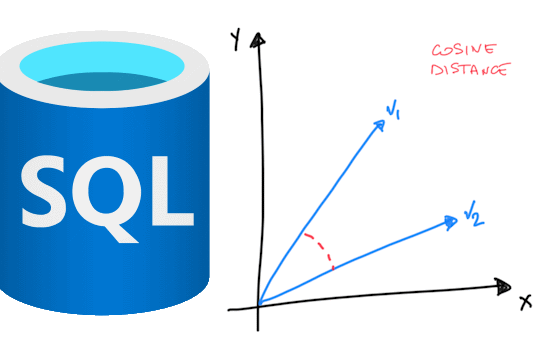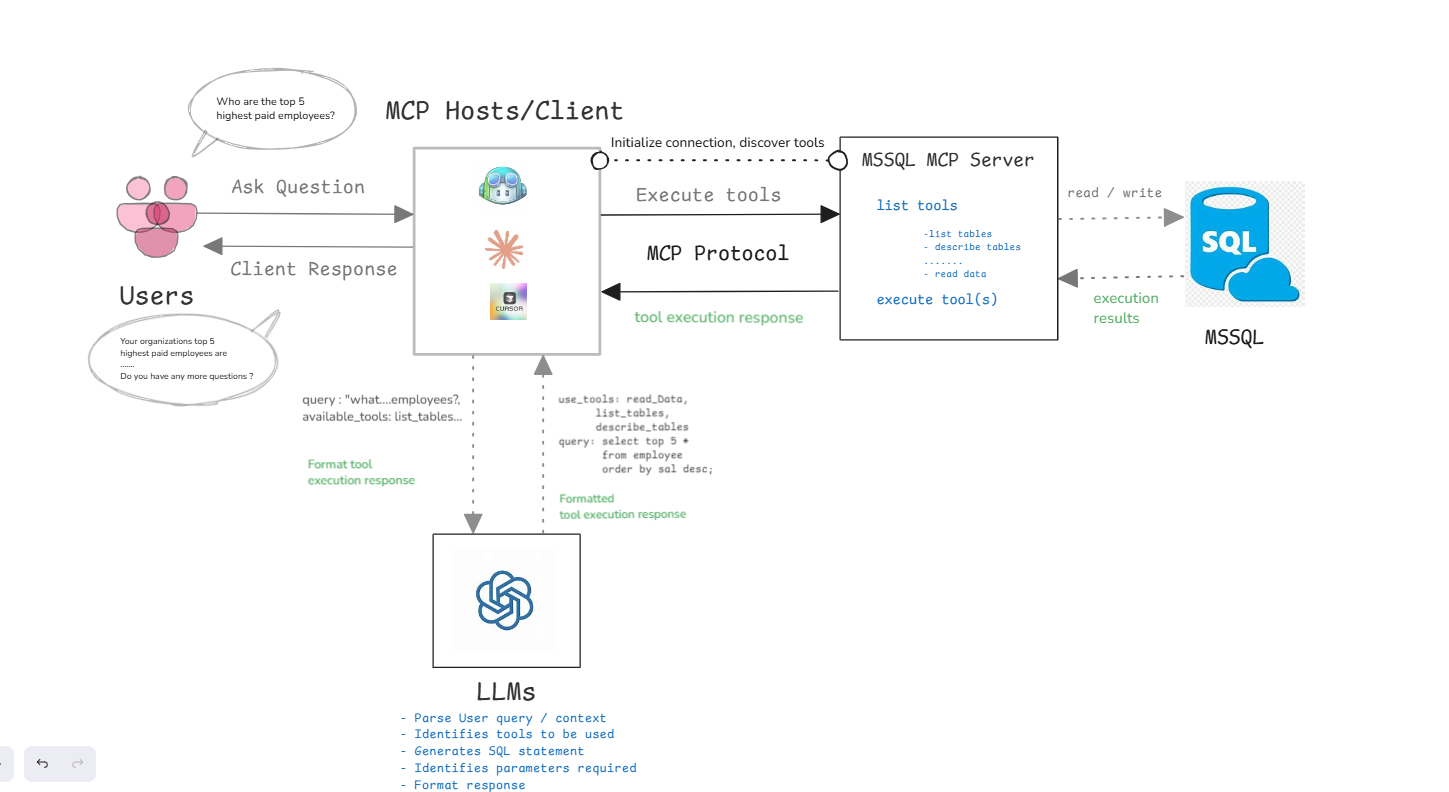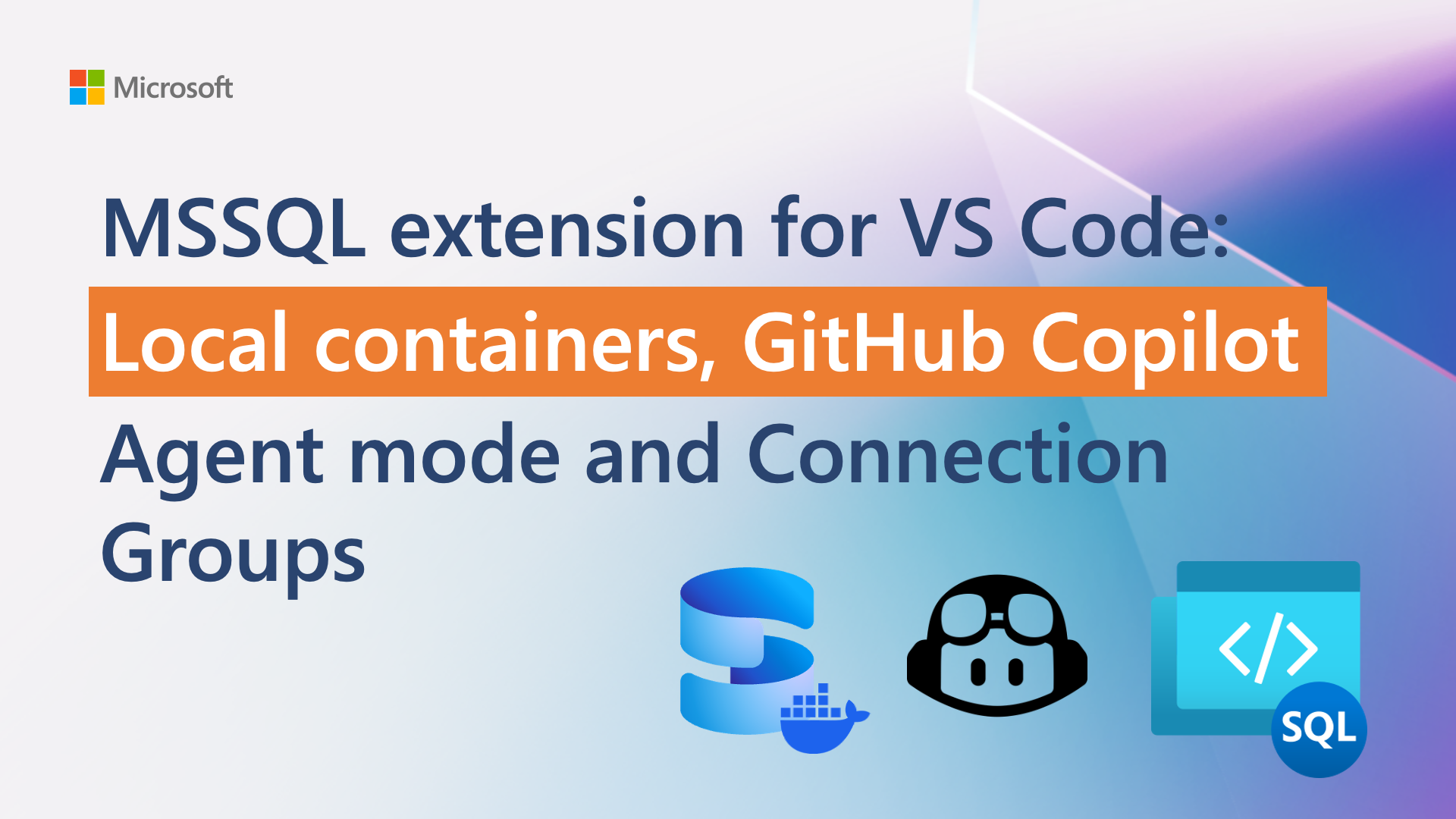Azure SQL Devs’ Corner
Voices from the Azure SQL PM Team, focusing on development and developers
Featured posts

Announcing General Availability of Native Vector Type & Functions in Azure SQL
We are happy to announce that Native vector support in Azure SQL Database and Azure SQL Managed Instance is moving to General Availability this summer. Deploym...
Latest posts

Agents at Work: Putting MSSQL MCP Server into Practice
How often have you wished you could just talk to your data? Imagine extracting crucial insights, updating records, or building complex reports without wrestling with intricate query languages or relying on a dedicated developer. For many professionals, the true power of their enterprise data remains locked behind technical barriers, hindering agile operations and quick decision-making. This universal challenge affects countless individuals whose expertise lies outside the realm of database management. In our previous blogpost, we introduced the groundbreaking MSSQL MCP Server (in Preview), highlighting its rol...

Introducing MSSQL MCP Server (Preview)
The next leap in data interaction isn't just about efficient processing; it's about intuitive and meaningful conversation with your own data. For years, the true power of SQL Server databases has been locked behind complex query languages and specialized tools, accessible primarily to developers and database administrators. But what if anyone, regardless of their technical expertise, could simply ask their database a question and get an intelligent, actionable response? We're thrilled to offer you a first practical look at MSSQL MCP Server. This powerful capability, currently in a preview phase and available...

MSSQL Extension for VS Code: Local Containers, GitHub Copilot Agent Mode and Connection Groups
The MSSQL Extension for VS Code continues to evolve, bringing powerful new features that make SQL development more local, more organized, and more intelligent. In version v1.33.0, we’re introducing Local SQL Server container, GitHub Copilot Agent Mode, and Connection Groups—three capabilities designed to simplify and modernize the way developers build applications using SQL Server in Visual Studio Code. Here’s a closer look at what’s included in this release and how these features can enhance your SQL development workflow. What’s new in MSSQL extension for VS Code v1.33 This release introduces three major ca...

SQL Server 2025 CTP 2.1: DiskANN Improvements
I'm happy to announce that SQL Server 2025 CTP 2.1 is now available, and it brings significant improvements to DiskANN support. While DiskANN remains in preview, each release continues to remove limitations and boost performance. In this release, we’ve made a particularly notable leap in vector index creation speed, with more enhancements on the horizon. What’s New in DiskANN DiskANN is Microsoft’s algorithm for large-scale vector search and recommendation systems. It’s designed to scale to web-sized datasets while maintaining high recall and performance. With SQL Server 2025, DiskANN is fully integrated into t...

An open-source AutoScaler for Azure SQL Hyperscale Elastic Pools
TrackAbout is a worldwide provider of SaaS applications for tracking reusable, durable, physical assets like chemical containers and gas cylinders. With over 22 million physical assets tracked across 350 customers, each with their own Azure SQL database, optimizing our infrastructure for both cost and performance is a critical, ongoing mission. Our journey with Microsoft technologies goes back to our founding in 2002. We started by racking our own servers, moved to managed hosting, and finally migrated to Azure in 2016 to gain more control and scalability. A core part of our architecture today is Azure SQL...

A story of collaborating agents: chatting with your database the right way
Today, more and more customers are embracing AI with one clear goal in mind: they want to chat with their data. And by "data," they mean all of it: structured tables, unstructured documents, images, audio, and more. This demand has given rise to hybrid approaches that blend semantic understanding with precise data retrieval. But here’s the challenge: while embeddings and vector search play a critical role in semantic search, they’re not enough on their own — especially when the question is highly specific and demands an exact answer. As I discussed in Improve the “R” in RAG and Embrace Agentic RAG in Azure...

Azure SQL Cryptozoology AI Embeddings Lab Now Available!
Missed out on MS Build 2025? No worries! Our lab is now available for your exploration. Dive into a unique cryptozoology experience using Azure SQL and Azure AI to uncover intriguing (and true) connections among cryptids worldwide. Curious about who would reign supreme in a battle royal or which regions of the world hold the key to encountering these mysterious creatures? Embark on a journey of discovery with the Azure SQL Cryptozoology AI Embeddings Lab! Discover more HERE!

Vector Support Public Preview now extended to Azure SQL MI
We are thrilled to announce that Azure SQL Managed Instance now supports Vector type and functions in public preview. This builds on the momentum from Azure SQL Database, where vector support has been in public preview since December. Check out the detailed announcement 💡 Why Choose Azure SQL Managed Instance for AI-Driven Modernization? 🔄 Quick Start: Use the Free Offer to Explore Vector Support in Azure SQL MI Before we dive deeper, let’s take a moment to explore how you can get hands-on experience with these capabilities—at no cost. Azure offers a SQL Managed Instance free offer , perfe...
Getting started with AI in SQL Server 2025 on Windows
Back in the earlier part of the year (February maybe?), I put this tutorial together for our early adopters in the SQL Server 2025 program. It’s a guide for setting up SQL Server 2025 in a Hyper-V VM (I used Windows Server) with Ollama and ngnix as an https proxy. It's a variation of my workshops for Ignite 2024 and a SQL in Fabric one from February 2025. This tutorial helps you get started using the new AI features of SQL Server 2025 on Windows/Windows Server. Prerequisites Set up your environment The following section guides you through setting up the environment and installing the nec...
